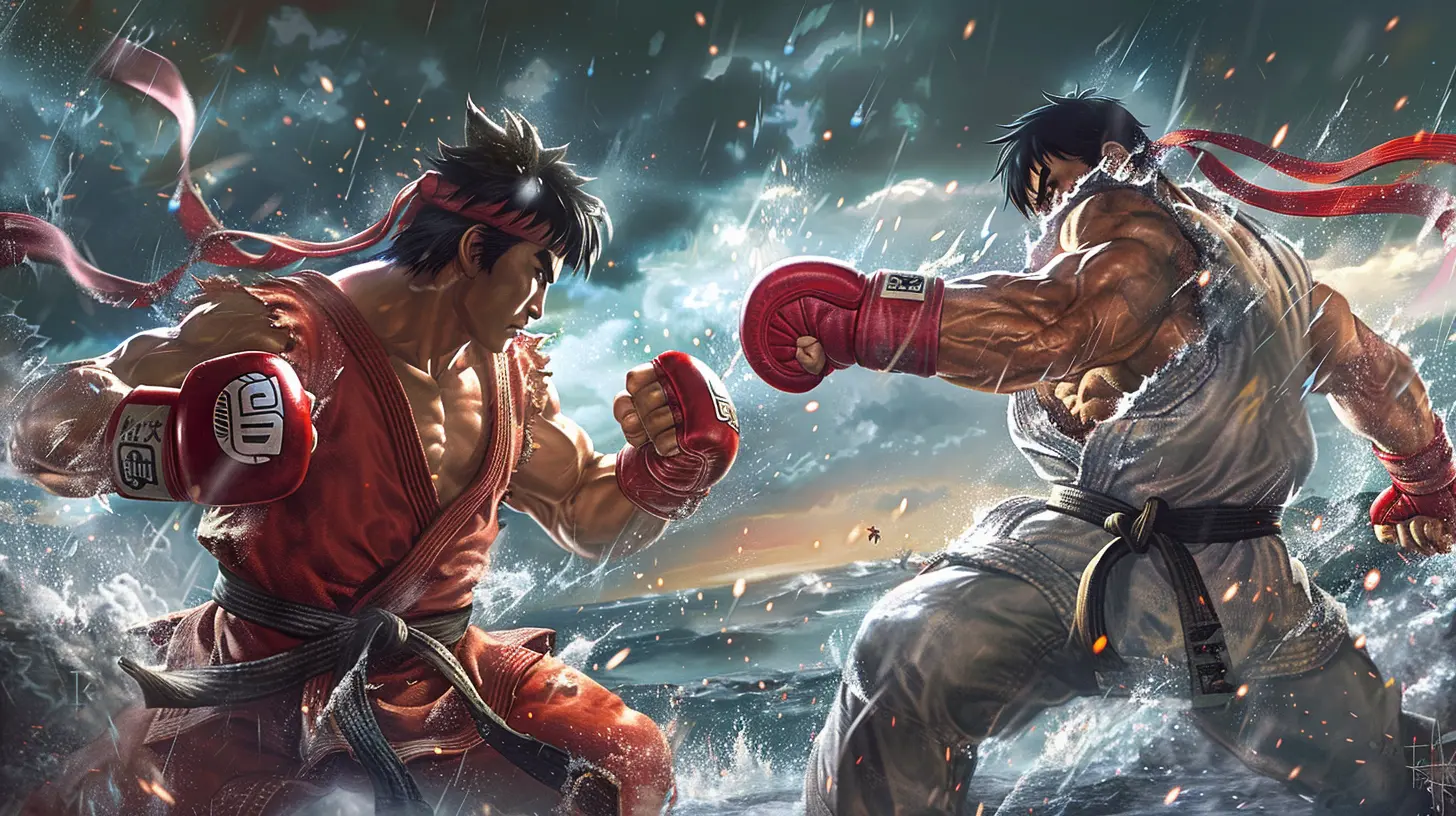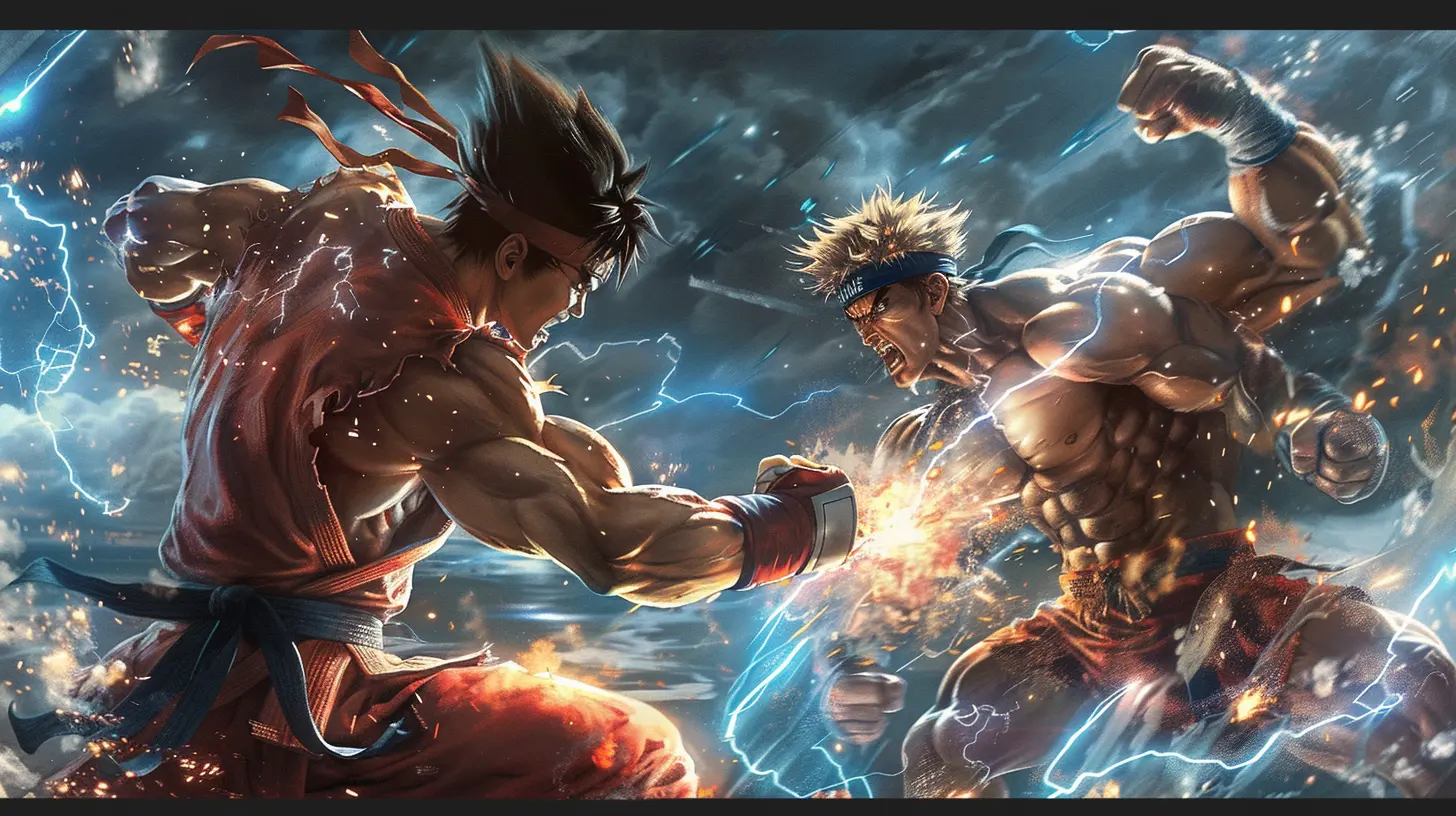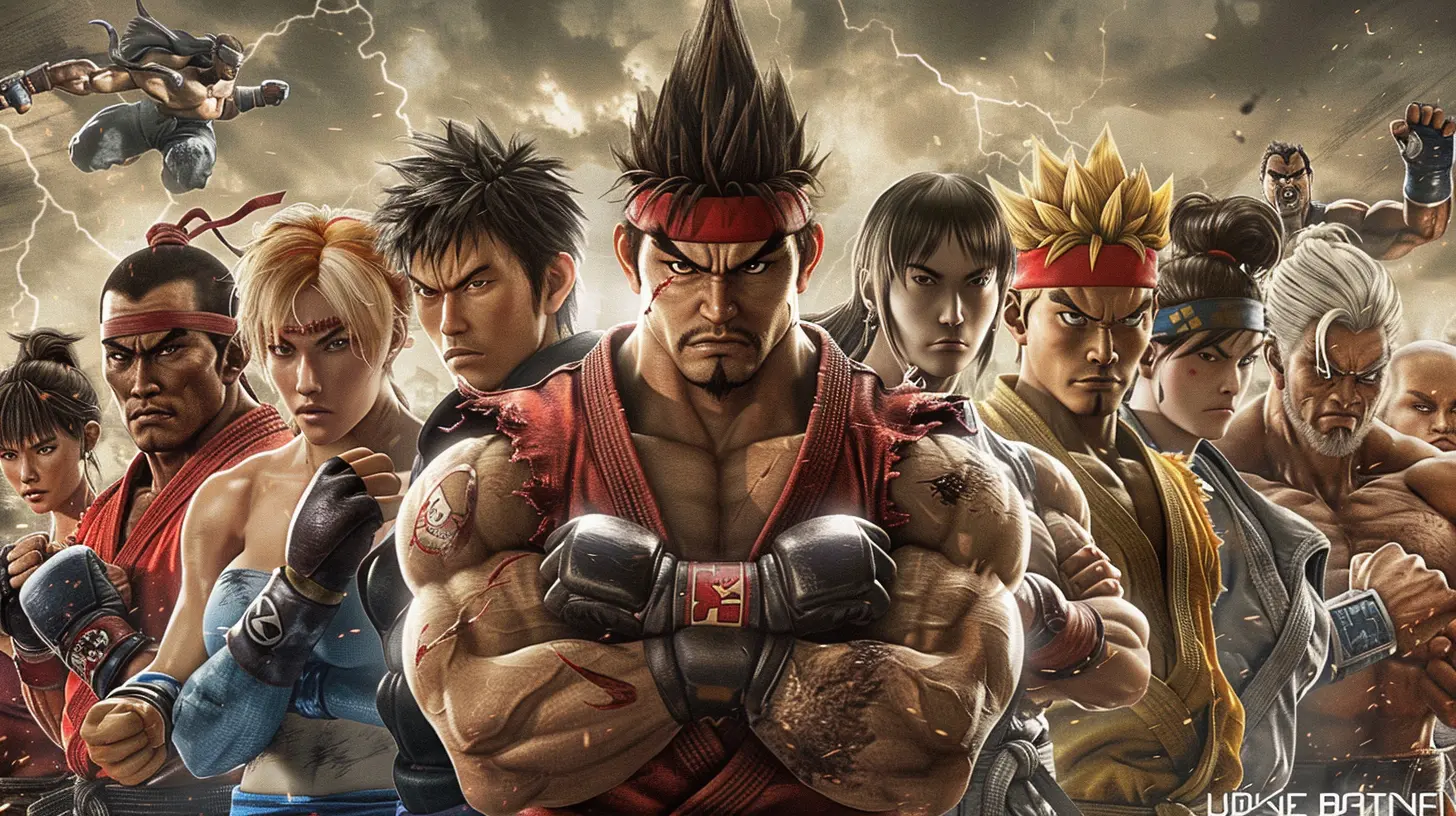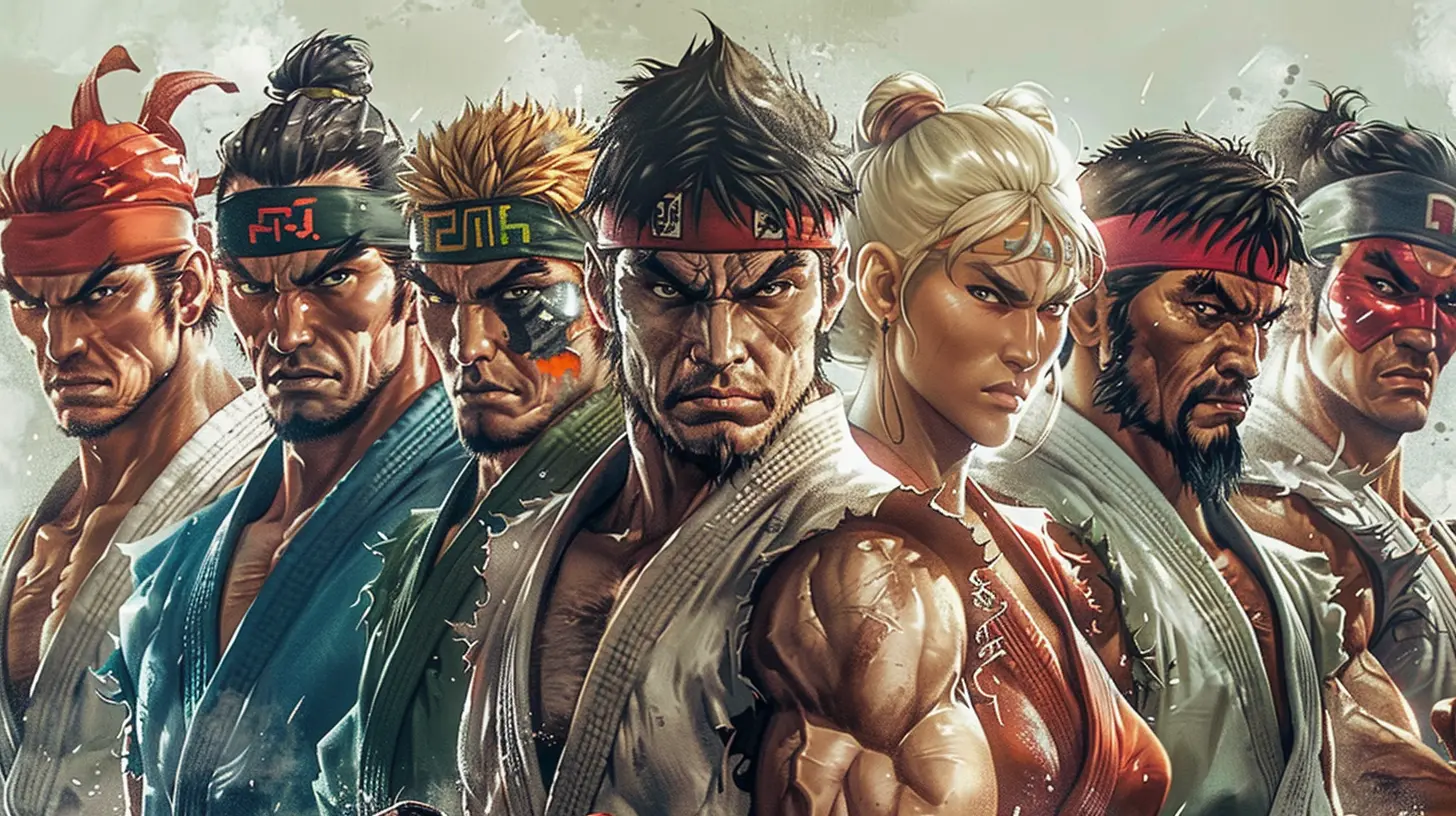The Evolution of Fighting Games: From Street Fighter to Tekken
5 October 2025
Fighting games are like the peanut butter and jelly of the gaming world—they just work so well. They blend skill, strategy, and a bit of button-mashing chaos into an addictive formula that keeps players coming back for more. Whether you're struggling to land a perfect Hadouken in Street Fighter or stringing together a killer combo in Tekken, these games have a way of getting under your skin (in the best way possible). But have you ever stopped to wonder how fighting games have evolved over the years? Let's take a dive into the brawl-filled history of fighting games, tracing their journey from the pixelated punches of Street Fighter to the visually stunning and mechanically intricate world of Tekken.
The Birth of Fighting Games: A Pixelated Beginning
Before we talk about Street Fighter or Tekken, let's rewind to the late '70s and early '80s. Fighting games didn't exactly come out of nowhere—they evolved like an underground scene gaining momentum. It all started with titles like Heavyweight Champ (1976), which gave players a taste of one-on-one combat, albeit in a crude, black-and-white package. Then came Karate Champ in 1984, which many credit as the grandfather of modern fighting games. It introduced the concept of tournament-style matches, laying down the groundwork for what the genre would become.But let’s be real—these games were clunky. They lacked the fluidity and polish we now associate with fighting games. Still, they sparked something: a hunger for fast-paced, competitive gameplay. That hunger would soon find its first satisfying meal in 1987.
Enter Street Fighter: The Game That Changed Everything
If we're talking about game-changers (pun intended), Street Fighter deserves its moment in the spotlight. Released in 1987 by Capcom, it wasn’t exactly perfect—it was kind of like the awkward teen years of fighting games. The controls were tricky, and the gameplay felt stiff. But it introduced something revolutionary: special moves. You had characters like Ryu and Ken pulling off fireballs (Hadoukens) and dragon punches (Shoryukens), which upped the stakes in battles.It wasn’t until Street Fighter II in 1991, though, that fighting games truly exploded. This wasn’t just "another arcade game"; it was the arcade game. Lines of players would literally form at arcades to challenge the reigning champion. Street Fighter II introduced a roster of diverse characters, each with unique movesets and personalities. It also added combo moves (albeit accidentally at first), which became a staple of the genre. The game essentially defined what a fighting game should be. It was fast, flashy, and ridiculously fun.
And let's not forget the cultural impact. Characters like Chun-Li became gaming icons, and phrases like "You win!" or "Hadouken!" became part of pop culture. Street Fighter II wasn’t just a game—it was a phenomenon.
The Rise of 3D Fighting Games: Virtua Fighter Paves the Way
In the mid-’90s, something incredible happened. Gaming technology upgraded, and developers started experimenting with 3D graphics. Sega’s Virtua Fighter (1993) was the first fighting game to boldly step into this brave new world of polygons. While it didn’t feature any fireballs or flashy special effects like Street Fighter, it introduced a new level of realism and depth. Fighters could move in three dimensions, creating a new layer of strategy. Virtua Fighter proved that fighting games didn’t need to rely solely on over-the-top visuals—they could also be about precision and technique.Although it was groundbreaking, Virtua Fighter wasn’t for everyone. Let’s be honest—its focus on realism made it feel more like a physics experiment than a fistfight. But it laid the groundwork for what was coming next: the arrival of Tekken. 
The Tekken Era: The King of 3D Beatdowns
If Virtua Fighter was the quiet kid in the corner, Tekken was the loud, boastful jock who demanded attention. Released by Namco in 1994, Tekken took everything Virtua Fighter had done and added flair, personality, and a side of chaos. Its roster of fighters was bigger, its controls were more accessible, and its plot (while ridiculous) was weirdly engaging. What's not to love about a storyline where an evil CEO (Heihachi Mishima) throws his own son off a cliff?One of Tekken’s most significant innovations was its unique control system. Each of the four face buttons on the controller corresponded to one of the fighter's limbs—left punch, right punch, left kick, right kick. It felt intuitive and gave players a true sense of control over their characters. And the combo system? Oh, man. Pulling off a 10-hit combo felt as satisfying as perfectly nailing a guitar solo.
Plus, Tekken brought the drama. Its characters had backstories, rivalries, and grudges that unfolded across several games. It blurred the line between a straight-up arcade brawler and a soap opera—with fists.
The Golden Age of Fighting Games: The Late '90s and Early 2000s
The late '90s and early 2000s were the golden age of fighting games. Arcades were still thriving, and home consoles were becoming powerful enough to deliver arcade-quality fighting games. Games like Mortal Kombat, Soulcalibur, and King of Fighters joined the ranks of Street Fighter and Tekken, ensuring players had more than enough options when it came to settling scores.During this time, fighting games weren’t just about fighting—they were about spectacle. Take Mortal Kombat, for example. It pushed the boundaries of violence in gaming with its infamous Fatalities, sparking debates about video game censorship. Meanwhile, Soulcalibur wowed players with its stunning visuals, fluid gameplay, and weapon-based combat.
The genre diversified, offering everything from hyper-stylized anime brawlers (Guilty Gear) to crossover dream matches (Marvel vs. Capcom). Fighting games were no longer just games—they were events.
The Evolution of Fighting Mechanics: From Simplicity to Complexity
One of the most fascinating aspects of fighting games is how their mechanics have evolved. Early games like Street Fighter II were relatively simple. Sure, they had depth, but anyone could pick up and play. However, as the genre matured, games started to cater more to hardcore players.Take Tekken, for example. By the time Tekken 3 hit arcades in 1997, the series had introduced features like sidestepping, parries, and juggling. It became a game where strategy trumped mindless button-mashing. Meanwhile, Street Fighter evolved into games like Street Fighter III, which introduced mechanics like parry counters—skill-based maneuvers that rewarded precision timing.
As fighting games became more complex, the learning curve steepened. This was a double-edged sword. On one hand, it created a fiercely loyal competitive scene. On the other, it scared off casual players who just wanted to have some fun without memorizing frame data or hitboxes.
Modern Fighting Games: Balancing Nostalgia and Innovation
So, where are we now? Well, modern fighting games are walking a tightrope between staying true to their roots and embracing innovation. Games like Street Fighter V and Tekken 7 have become staples in the esports scene, drawing massive audiences and elevating fighting games into serious competitions. Meanwhile, titles like Mortal Kombat 11 and Dragon Ball FighterZ remind us that fighting games can still be flashy, over-the-top, and ridiculously fun.What’s even more exciting is how modern fighting games are embracing accessibility. Take Guilty Gear Strive, for instance. It’s praised for simplifying complex systems without dumbing down the experience, making it approachable for newcomers while still rewarding veterans.
And let’s not forget online play. Thanks to advancements in netcode (hello, rollback!), it's easier than ever to find opponents worldwide. No more waiting in an arcade for your turn—now you can throw down from the comfort of your couch.
The Future of Fighting Games
So, what’s next for the genre? Honestly, the possibilities are endless. With VR and AR tech improving, we could soon be stepping into the ring ourselves—throwing punches and dodging kicks like we’re in a Tekken tournament. Imagine fighting games where you don’t just control the character; you are the character.And with AI continuing to evolve, fighting game AIs could become smarter, adapting to players’ strategies on the fly. Imagine having a virtual sparring partner that learns alongside you. Pretty wild, right?
Regardless of where the genre heads, one thing’s for sure: fighting games will continue to captivate us. After all, there's something timeless about a good fight—it’s primal, challenging, and endlessly entertaining.
Final Thoughts
From the humble beginnings of Heavyweight Champ to the cutting-edge mechanics of Tekken 7, fighting games have come a long way. They're more than just pixels and polygons—they’re a celebration of skill, competition, and, well, throwing virtual punches. And whether you’re a casual player or a hardcore tournament contender, there’s no denying the impact fighting games have had on the gaming world.So, next time you pick up a controller and square off against a friend in a digital duel, take a moment to appreciate the rich history behind the genre. Because fighting games aren’t just about winning or losing—they’re about the thrill of the fight.
all images in this post were generated using AI tools
Category:
Gaming HistoryAuthor:

Madeleine McCaffrey
Discussion
rate this article
1 comments
Finley Hill
Fighting games have redefined competition and camaraderie. From Street Fighter’s pixelated brawls to Tekken’s intricate animations, each evolution showcases innovation, pushing boundaries and setting new standards relentlessly. Embrace the fight!
October 11, 2025 at 3:25 AM

Madeleine McCaffrey
Thank you for your insightful comment! It's true that fighting games have not only revolutionized competition but also fostered a strong sense of community, bridging players across generations.


